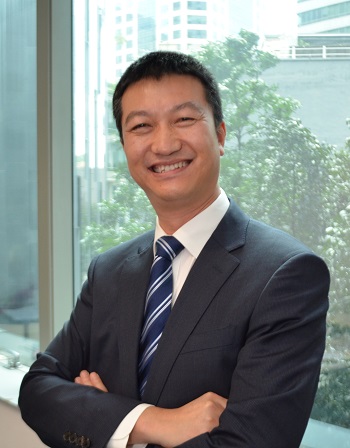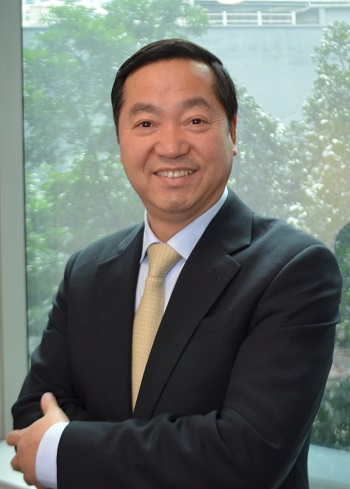 “We have planned investments of close to a billion yuan. It is possible to get bank financing for 60% to 70% of that sum because the sector is supported by the government. Our internal operating cash flow is strong enough to finance the balance,” said Executive Director Frank Ma.
“We have planned investments of close to a billion yuan. It is possible to get bank financing for 60% to 70% of that sum because the sector is supported by the government. Our internal operating cash flow is strong enough to finance the balance,” said Executive Director Frank Ma.
Photo by Sim Kih
EVERY MORNING before leaving for his office in Nanjing, Sunpower Group Executive Director Frank Ma checks the PM2.5 level for the day.
“I then decide if I should spend more time indoors or outdoors. In fact, I check two times, three times a day. If it gets bad, I will stay in the office and not go out,” he said at the Group's results briefing yesterday (Thursday).
In the spotlight of China's battle against air pollution is smog -- and Singapore-listed Sunpower has seized opportunities to join in the battle.
Smog with minuscule particles known as PM2.5 contains toxic heavy metals, acid oxides, organic pollutants, and other chemicals, as well as micro-organisms such as bacteria and viruses.
They are risk factors for a number of cardiovascular and respiratory problems, and cancer.
The burning of coal is responsible for 60% of PM2.5 in China. In northern China, most of the heating for homes and offices is supplied by coal-boiler heating systems. Coal is burned in a central furnace to heat water which is sent at high temperatures through a system of large diameter pipes before being piped at lower temperatures into individual homes and offices.
In 2013, Chinese authorities implemented a policy to shut down primitive coal-fired boilers (capacity of less than 35 tons of steam per hour) by 2017. These are to be replaced by efficient industrial boilers and centralized steam technology in industrial parks.
"There is clear market demand for the modernisation of these primitive boilers. Government policy support in this area has also been growing," said Mr Ma.
Sunpower, which secured its maiden centralized steam BOT project last December, has estimated the replacement market to be worth some Rmb 500 billion a year from steam generation revenue.
"We put much effort in R&D and feasibility studies for this, but held back on the project until now so that we can benefit from timing that is aligned with government policy implementation," he added.
|
Maiden mega-sized BOT project
The Group posted a 45.3% year-on-year surge in net profit attributable to shareholders for FY2015 to Rmb 81.5 million. It has proposed a final dividend of 0.12 SGD cents per share.
|







